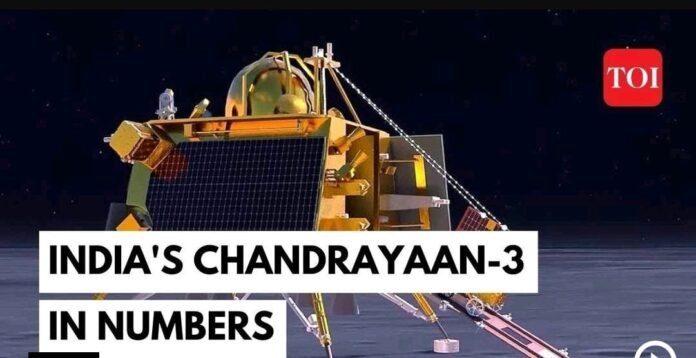In a meticulous endeavor, Indian Space Research Organisation (ISRO) scientists have undertaken a rigorous selection process to pinpoint the most ideal landing sites for the upcoming Chandrayaan-3 lunar mission. This vital stage of mission planning involves an intricate amalgamation of scientific insight, advanced technology, and meticulous analysis.
Landing on the Moon is no easy feat, and the success of previous Chandrayaan missions has provided valuable lessons. Building on this experience, ISRO scientists have harnessed a multifaceted approach to identify suitable landing locations for Chandrayaan-3, which aims to delve deeper into lunar exploration.
The initial step in the site selection process involved an extensive review of lunar topography data gathered from various sources, including previous missions and satellite observations. This comprehensive dataset was then subjected to advanced computational models to analyze various factors, such as surface roughness, elevation variations, and potential hazards.
Moreover, the team meticulously factored in the scientific objectives of the mission. Chandrayaan-3 aims to unravel lunar mysteries by analyzing samples from diverse terrains. To accomplish this, potential landing sites were evaluated for their geological diversity and their likelihood of harboring intriguing materials, shedding light on the Moon’s history and evolution.
Safety, a paramount concern, played a pivotal role in the selection process. Lessons learned from Chandrayaan-2’s Vikram lander mishap led to a heightened emphasis on identifying landing zones devoid of treacherous terrains or abrupt elevational changes. This meticulous safety assessment drew upon high-resolution imagery, enabling scientists to scrutinize potential sites in unprecedented detail.
Furthermore, Chandrayaan-3’s landing site selection considered the practical aspects of mission execution. The site’s proximity to the Moon’s polar regions proved advantageous due to better illumination conditions and the potential accessibility to water ice resources. These resources can play a crucial role in supporting future lunar exploration endeavors.
ISRO scientists collaborated with international experts to ensure a well-rounded evaluation. Lessons from global lunar missions, including NASA’s Apollo and recent Chinese missions, were integrated into ISRO’s decision-making process. This collaborative approach brought forth a diversified perspective, enriching the final selection.
In a noteworthy departure from the earlier missions, Chandrayaan-3’s site selection took advantage of AI-powered algorithms. These cutting-edge tools assimilated a plethora of data points, enabling rapid evaluation and informed decision-making. This amalgamation of human expertise and technological prowess exemplifies ISRO’s commitment to pushing the boundaries of lunar exploration.
As ISRO gears up for the Chandrayaan-3 mission, the painstaking site selection process stands as a testament to India’s scientific prowess and determination. With a fusion of advanced technology, collaborative insights, and meticulous analysis, ISRO is poised to script another chapter in lunar exploration, unraveling mysteries and expanding humanity’s understanding of the celestial world beyond Earth.

